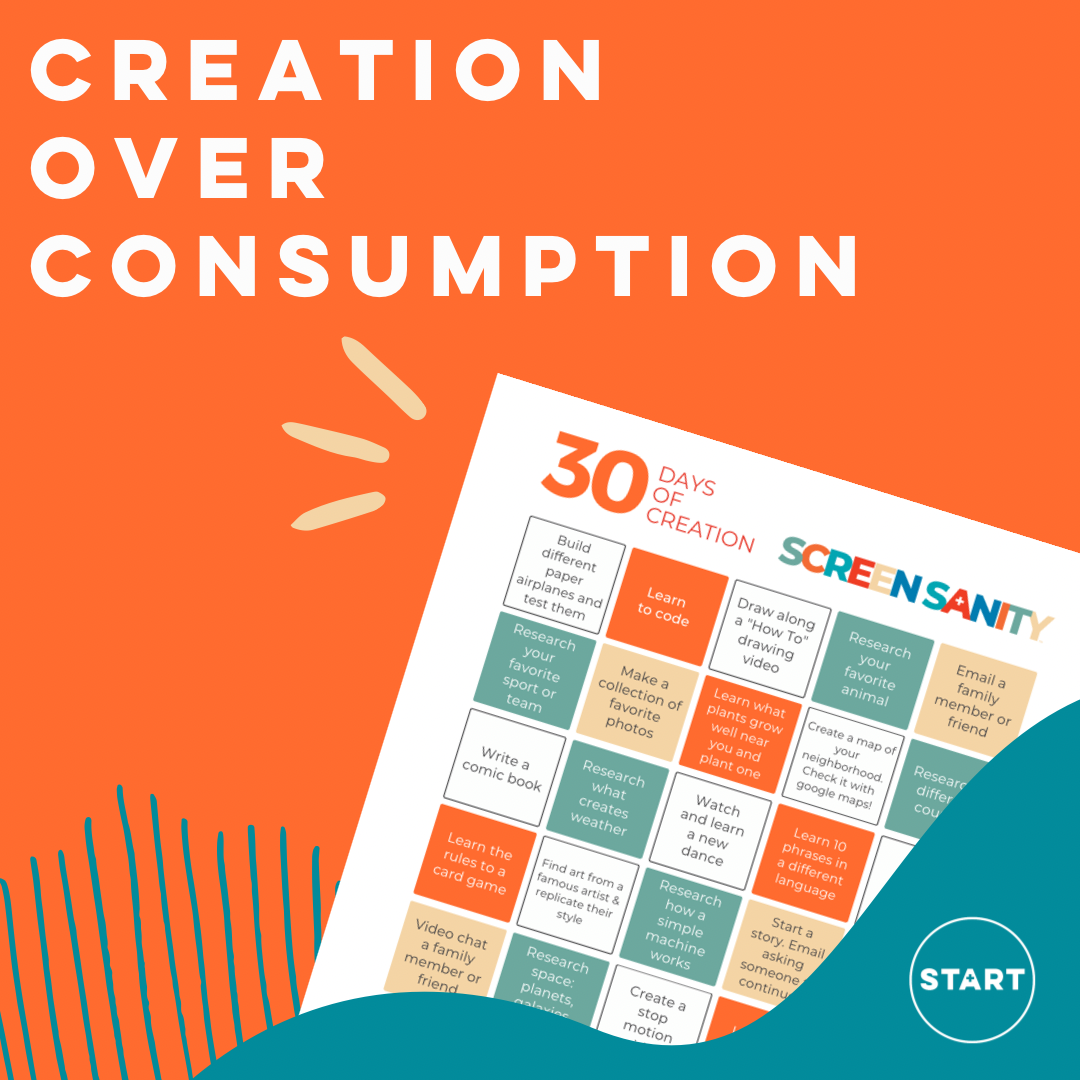
With summer kicking into high gear, we can quickly feel overwhelmed with the responsibility of keeping kids engaged and entertained. While it can be so tempting to use screens as the solution, what if we were more intentional with our technology use this summer? What if instead of a platform of consumption, it were one of sparking creation? What if instead of a problem, it were a partner?
This summer, we’re on a mission to team up with technology, seeing it as a means to an end — a mode for driving creativity, curiosity and connection, and not the goal itself.
This resource is designed to help you restructure your tech use this summer. It can be used as an activity for kids when you’re not available, or as a collaborative experience to journey on together. Either way, it’s meant to facilitate conversations between you and your kids. Let’s trade technology’s ensuing comparison, apathy and isolation for the cultivation of skills, art, curiosity and connection.
Content doesn’t have to end with what’s on the screen. The best content is within you.
Boredom can often seem like the bad guy. It presents itself as frustration, restlessness, even unhappiness, and as parents, keeping boredom at bay can feel like an overwhelming responsibility. For our kids (and ourselves), it’s often easy to see screens as the antidote to this nemesis, offering stimulation and distraction from the negative feelings. However, research shows that underneath the disguise, boredom is actually a really helpful friend to our brains. It’s in our unoccupied brain space that we tap into a precious type of thinking called mind-wandering, which is the birthplace of creativity and many of our best ideas. By helping our kids learn how to tolerate and appropriately channel boredom, we can support them in developing valuable self-control skills and accessing their creative brain.
Provide kids with ownership and choice. Using technology in a new way may bring about some pushback, so giving the fun as much free rein as possible can create more buy-in. If boredom brings about a wacky idea, you may have to buckle up for the ride. Let them be designers, dreamers, dancers and more!
However, the task of embracing boredom may be tough for some kids. If this is the case, know that your child is not alone! New work requires practice, and it might help to give kids some support in finding their fun. This is where our “30 Days of Creation” comes into play. After exercising the brain with boredom, presenting kids with this choice board may help propel the creativity process.
As your kids use technology to engage with and explore the world around them, one way to cement their learning and spark further curiosity is for them to have conversations about what they’re discovering. Sharing what we’re learning as we learn, or “learning out loud,” can increase our retention of information, foster excitement, and also create connections with those around us. A pivotal part in taking technology usage from consumption to creation is what happens after the screen is shut off. What constellations did you discover? Can you find them together tonight? The excitement of learning has to find a place of existence beyond the screen for kids to recognize their captivation is with the curiosity and wonder of life, not the technology. Through conversations we can help them draw this connection.
Time flies when we’re having fun, right? To cultivate time well spent, a recommendation we hold with technology is a 1:1 time ratio. For every half hour spent engaged with screens we encourage a half hour spent engaged with real life. This same mentality applies to our “30 Days of Creation” challenge. As you and your kids are working to use technology to foster creativity, remember that each activity is designed to also be paired with a dose of non-screen time. When logging on to locate famous artwork, make sure to protect time for actually becoming the artist.
As with anything, the power of positivity goes a long way in encouraging creativity. Kids may not be comfortable with using technology for creation rather than consumption, and new habits are hard to build. Celebrate the ways that your kids were able to access their creative mind and remember that their work is simply one part of the experience. Doing so will foster a growth mindset, where challenges are seen as detours rather than stop signs. Another thing to keep in mind is that creativity is a naturally social process. It begins with noticing and imitating the work of others, this inspiration ultimately serving as a vessel to creating work of your own. By encouraging your kids along the way, you will reinforce these healthier tech rhythms.
Grab your free 30 Days of Creation download here.